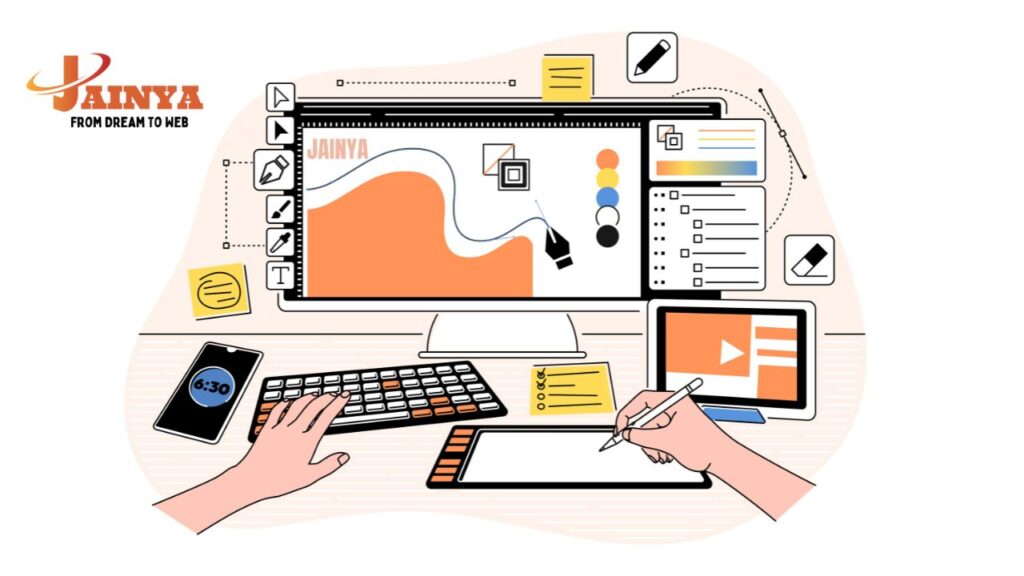Custom website creation is an important part of having a strong online presence in the modern world. It means making a website that fits the needs and wants of a person or business. This allows for a very personalized approach that fits with the client’s brand and goals.

Custom website development remains a crucial aspect of establishing a strong online presence in today’s digital landscape. This overview will provide an in-depth analysis of custom website development, including its benefits, challenges, costs, and relevance in the current digital ecosystem.
Definition and Core Concept
Custom website development refers to the process of creating a website tailored specifically to the unique needs and requirements of a business or individual. Unlike template-based solutions, custom development allows for a fully personalized approach, ensuring that every aspect of the website aligns with the client’s goals and branding.
Key Benefits of Custom Website Development
- Tailored Solutions: Custom websites are built from scratch, allowing for designs that meet specific business needs and user experiences. This level of customization can significantly enhance functionality and user engagement.
- Scalability: As businesses grow, their website needs may change. Custom development allows for easier scalability, enabling businesses to add features or expand their site without the limitations often found in pre-built templates.
- Enhanced Performance: A well-developed custom website can lead to better performance, including faster load times and improved SEO, which are crucial for attracting and retaining visitors.
- Brand Identity: Custom websites provide an opportunity to create a unique online presence that reflects the brand’s identity, helping businesses stand out in a crowded market.
- Improved User Engagement: Custom websites often provide a more tailored user experience, which can significantly impact first impressions. It is noted that web design influences 94% of all first impressions, and a well-designed website is seen as more trustworthy by 75% of visitors.
- Higher Conversion Rates: Enhanced UX design through custom development can increase conversion rates by up to 400%. This significant performance improvement is achieved by focusing on user-centric design elements that are often not as flexible in template-based solutions.
- Responsive Design and Mobile Optimization: Custom websites are more likely to implement responsive design effectively, which is crucial given that 90% of websites have adopted responsive design. Responsive design is associated with an 11% higher conversion rate and better user engagement, as mobile users engage 15% more with responsive platforms.
Challenges and Drawbacks
Despite its numerous advantages, custom website development also comes with several challenges:
- Higher Costs: One of the most significant drawbacks is the higher upfront cost compared to using pre-built templates or content management systems. Custom development requires hiring skilled developers and designers, which can significantly increase the initial investment.
- Longer Development Time: Custom websites typically take longer to develop than template-based solutions, often requiring 2-6 months for completion, depending on the complexity of the project . This extended timeline can delay the launch of the website, impacting business operations.
- Technical Expertise Required: Developing a custom website requires a high level of technical expertise. Businesses need to either have an in-house team with the necessary skills or hire external developers.
- Maintenance and Updates: Custom websites often require ongoing maintenance and updates to ensure they remain functional and secure. This can be resource-intensive and may require continuous collaboration with developers, adding to the overall cost and complexity.
- Risk of Scope Creep: Custom projects are susceptible to scope creep, where additional features and changes are requested during the development process. This can lead to increased costs and extended timelines if not managed properly.
- Security Concerns: While custom websites can be designed with security in mind, they can also introduce unique vulnerabilities if not properly developed. Ensuring robust security measures are in place is crucial to protect against potential threats.
- Compatibility and Integration Issues: Custom websites may face challenges in integrating with third-party services or ensuring compatibility across different browsers and devices. This requires careful planning and testing to avoid functionality issues.
Cost Analysis

The cost of custom website development varies significantly based on the project’s complexity and requirements:
- Initial Investment: Basic custom sites may cost anywhere from $5,000 to $15,000, while more intricate designs can exceed $50,000. A decently built custom website can cost between $10,000 and $100,000, depending on the level of customization and the specific needs of the business.
- Ongoing Maintenance: Maintenance costs can range from $100 to $500 monthly, depending on the level of service required.
- Long-Term Value: Despite the higher initial costs, custom websites can offer long-term cost-effectiveness by providing scalability and the ability to adapt to changing business needs.
In comparison, template-based solutions are generally more affordable, with costs starting as low as $100 to $1,000 for basic setups. Premium templates can cost between $50 to $300. Professionally customized templates can range from $1,000 to $5,000, offering a middle ground between DIY solutions and fully custom websites.
Current Trends and Technologies in Custom Website Development (2024)

The landscape of custom website development is constantly evolving. Here are the key trends and technologies shaping the field in 2024:
- Artificial Intelligence (AI) and Machine Learning: AI continues to be a significant trend, with applications ranging from AI-powered chatbots and virtual assistants to personalized content delivery and design automation.
- Progressive Web Apps (PWAs): PWAs are gaining traction as they offer a seamless user experience similar to native apps but with the accessibility of web applications.
- Serverless Architecture: This trend is becoming more prevalent as it allows developers to build and run applications without managing the underlying infrastructure, leading to cost savings and increased scalability.
- Blockchain Technology: The use of blockchain in web development is expanding, particularly in creating decentralized applications (dApps), offering enhanced security and transparency.
- Augmented Reality (AR) and Virtual Reality (VR): These technologies are being integrated into websites to provide immersive experiences, particularly in industries like retail and real estate.
- Headless CMS: The adoption of headless content management systems is on the rise, allowing developers to decouple the backend from the frontend, providing greater flexibility in delivering content across various platforms and devices.
- Internet of Behavior (IoB): This emerging trend involves using data collected from user interactions to influence behavior, creating more personalized and effective user experiences.
- Low-Code/No-Code Platforms: These platforms are becoming increasingly popular as they allow for rapid development and deployment of custom websites with minimal coding.
Case Studies and Success Stories

Several recent case studies highlight the effectiveness of custom website development:
- Polpharma API: A redesign project for a leading European pharmaceutical manufacturer resulted in improved navigation, product accessibility, and introduced animations, optimizing lead generation.
- Better: A New Zealand-based loan and insurance provider expanded its website to enhance user experience and rethink the application process, resulting in a modern website that combined a playful vibe with a professional tone.
- Hidden Heroes: This content hub, built using Webflow’s no-code platform, reached over 10 million readers and won The Drum Award in the News, Media, or Publishing category.
- Powermeals: A Swiss meal-delivery startup’s website redesign introduced new features and significantly improved performance, reducing page speed from 9 seconds to just 2.
Conclusion
Custom website development remains a powerful tool for businesses looking to establish a strong, unique online presence. While it comes with higher initial costs and potential challenges, the benefits of tailored solutions, improved performance, and long-term scalability make it a valuable investment for many organizations. As technology continues to evolve, custom website development will likely remain at the forefront of creating innovative, user-centric digital experiences.
The decision between custom development and template-based solutions should be based on a careful assessment of a business’s specific needs, long-term goals, and available resources. For businesses aiming to differentiate themselves in the digital landscape and provide exceptional user experiences, custom website development continues to be a compelling choice in 2024 and beyond.
Leave a Comment